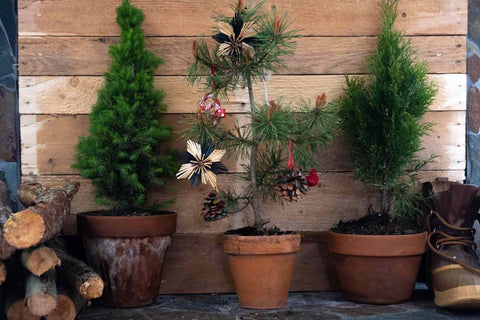As winter's icy grip tightens, gardeners often face the challenge of protecting their cherished plants from the harsh elements. In the realm of raised bed gardening, a valuable ally emerges – "Winter Mulching." In this comprehensive guide, we'll delve into the intricacies of winter mulching techniques, exploring how this practice can serve as a protective shield for your raised garden and ensure a vibrant, resilient landscape come spring.The following content also has some reference value for raised garden beds.
Unveiling the Winter Mulching Marvel: A Trendy Gardener's Secret Weapon
- Garden Armor: The Trendy Art of Winter Mulching
Winter mulching has evolved beyond a conventional practice; it's now a trending art form in the gardening world. This stylish yet practical technique not only insulates your raised garden beds but also adds a touch of sophistication to your winter gardening routine.
- Insulating Layers:
Winter mulching is akin to providing your garden beds with a cozy, protective blanket. Explore the use of various materials such as straw, shredded leaves, or pine needles to create a layered insulation system. This not only shields plants from freezing temperatures but also regulates soil temperature, preventing sudden fluctuations that can stress your plants.
Strategic Application for Maximum Impact
-
Strategic Mulching:
The success of winter mulching lies in strategic application. Begin by applying a thick layer of mulch around your plants, extending it to cover the entire root zone. This ensures that the insulating benefits of the mulch reach the critical areas where plants are most vulnerable to winter chill.
- Timing is Key:
Timing plays a crucial role in the effectiveness of winter mulching. Apply the mulch after the first hard frost but before the ground freezes. This allows the soil to retain some residual warmth, ensuring that your garden remains protected throughout the coldest months.

Crafting Your Mulching Arsenal: A Creative Approach to Winter Garden Care
- Mulching Artistry: Crafting Your Winter Garden Shield
Explore creative avenues in crafting your mulching arsenal. Opt for aesthetically pleasing materials like cedar chips or cocoa bean hulls that not only insulate but also enhance the visual appeal of your raised beds. This not only safeguards your garden but also elevates the overall aesthetics of your winter landscape.
- Mulching for Specific Plants:
Tailor your winter mulching approach to the specific needs of your plants. While a general layer of mulch benefits most plants, certain varieties may require additional protection. Tender perennials, young shrubs, and newly planted specimens may benefit from an extra layer or specialized mulching materials.

Conclusion: A Resilient Finale to the Winter Garden
As winter descends and frost decorates the landscape, mastering the art of winter mulching becomes a gardener's paramount skill. The strategic application, creative material choices, and timing considerations transform this practice into a garden armor that not only shields but also enhances the beauty of your raised beds.
Embrace winter mulching as a trendy and effective approach to insulating your raised garden beds. Let your garden don its cozy blanket, ensuring a resilient and vibrant landscape emerges when the icy grip of winter loosens its hold. Winter may bring challenges, but with the artful application of mulch, your raised beds can withstand the chill, promising a flourishing garden in the seasons to come.









